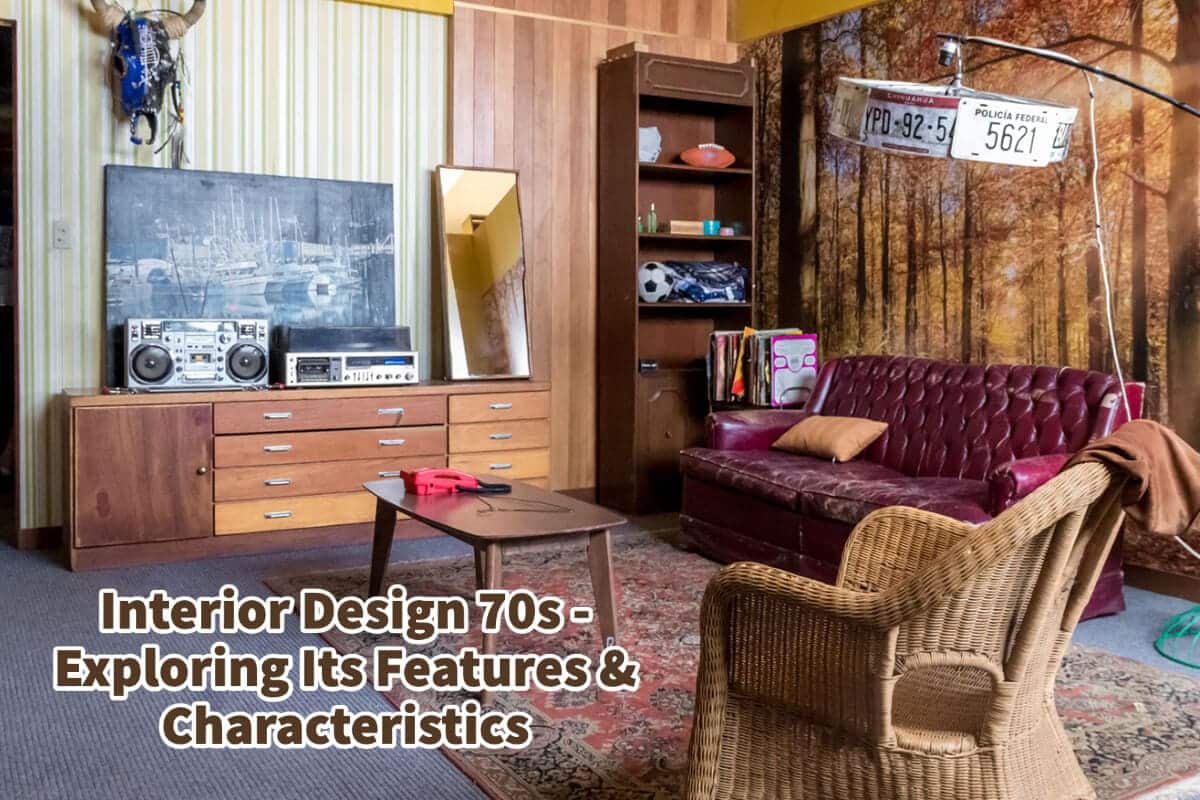The 70s was an interesting time for Interior design. It was a time that saw a shift or change from what was happening in the interior styles from the 1960s.
Interior design in the 1970s was all about bold colors, geometric shapes, and funky patterns. It was a time when people were looking for something new and exciting, and the world of interior design certainly delivered. Today, we see many of these trends coming back differently, proving that design trends will always have their place in interior design.
Table of Contents
- About Interior Design In The 70s Explored
- Many 1970s Designs Come Back Today!
- Design Trends Will Evolve And Come Back
- Some Possible Future Design Trends
- 12 Reasons the ’70s Shone Bright: A Dive into the Decade’s Influence on Home Decor and Beyond
- Related Content
About Interior Design In The 70s Explored
Interior Design in the 1970s was known for its love of bright and bold colors. Colors such as avocado green, burnt orange, and mustard yellow were important.
These colors were often used in the same space, creating a vibrant and energetic atmosphere. These colors were popular because they reacted to the muted tones of the 1960s, and people were looking for something more exciting.
The 1970s Interior Design And Geometric Shapes

One popular trend in the 1970s was the use of geometric shapes. This was seen in everything from furniture, wallpaper, wall art or decorative objects.
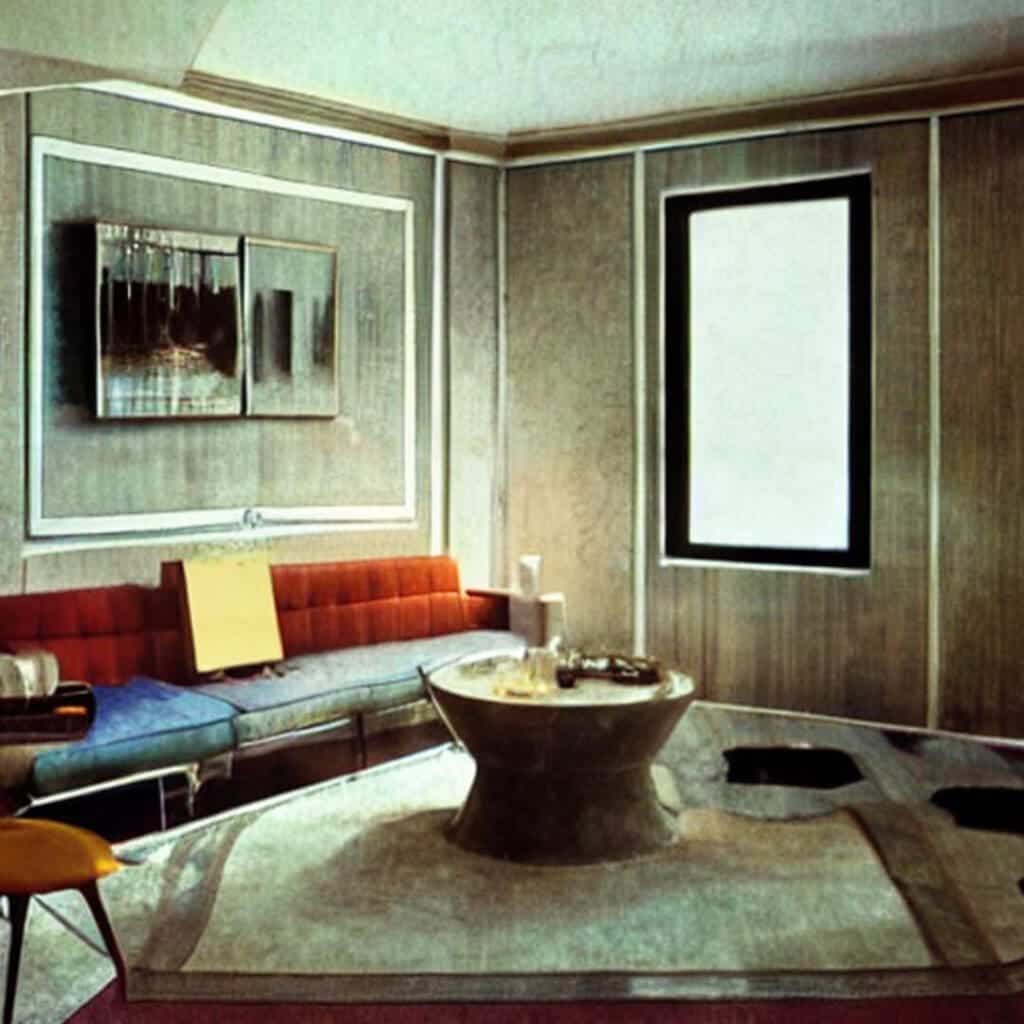
Furniture in the 1970s often had angular lines and sharp edges, which was a departure from the more traditional curves of the previous decade. Today may designers continue to draw inspiration from these curves.
The 1970s Interior Design And Natural Materials
Another trend that was popular in the 1970s was the use of natural materials. This was seen in everything from furniture, wall to flooring.
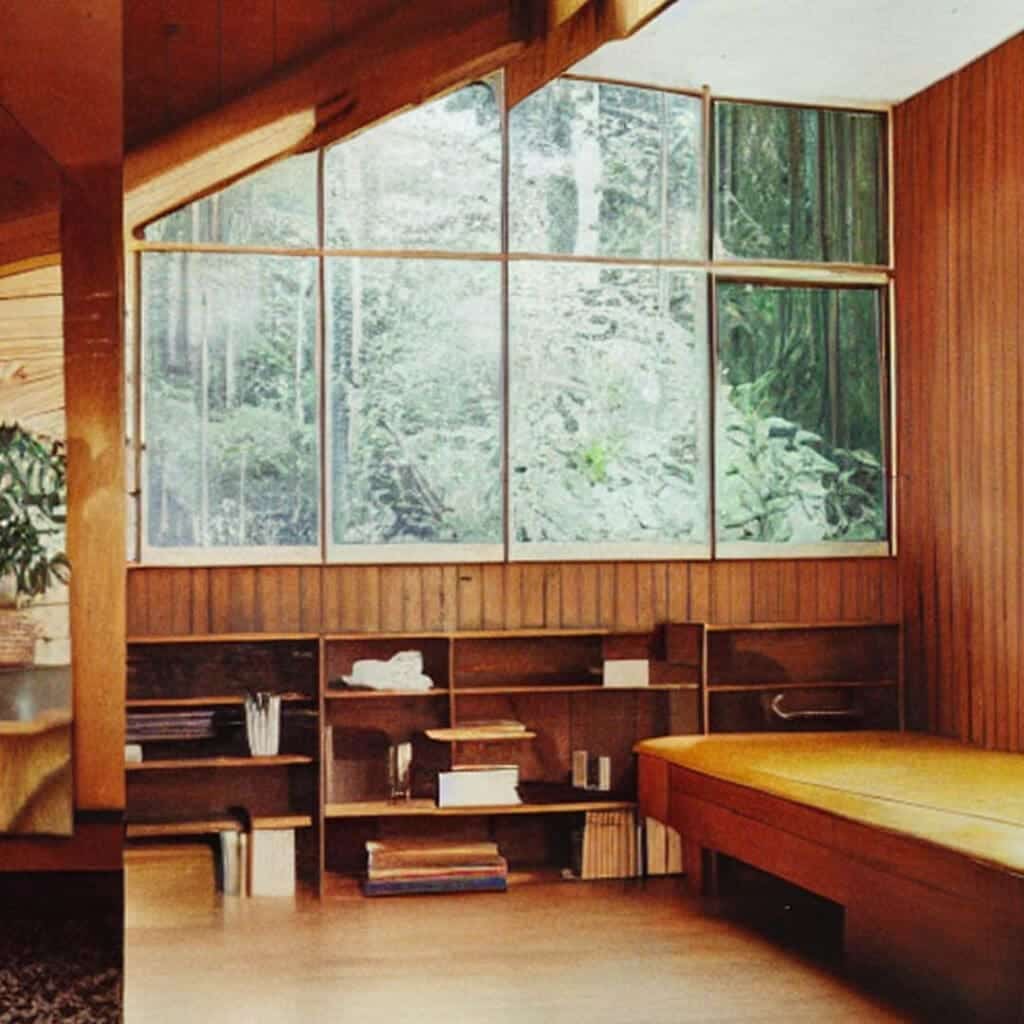
Wood was a popular choice for furniture, often left in its natural state or stained to bring out the grain. Stone and brick were also popular choices for flooring, adding a rustic and natural feel to spaces.
The 1970s And The Iconic Bean Bag Chair
One of the most iconic pieces of furniture from the 1970s was the beanbag chair. This casual and comfortable furniture was a favorite of young people looking for something different from the more formal furniture of their parent’s generation.
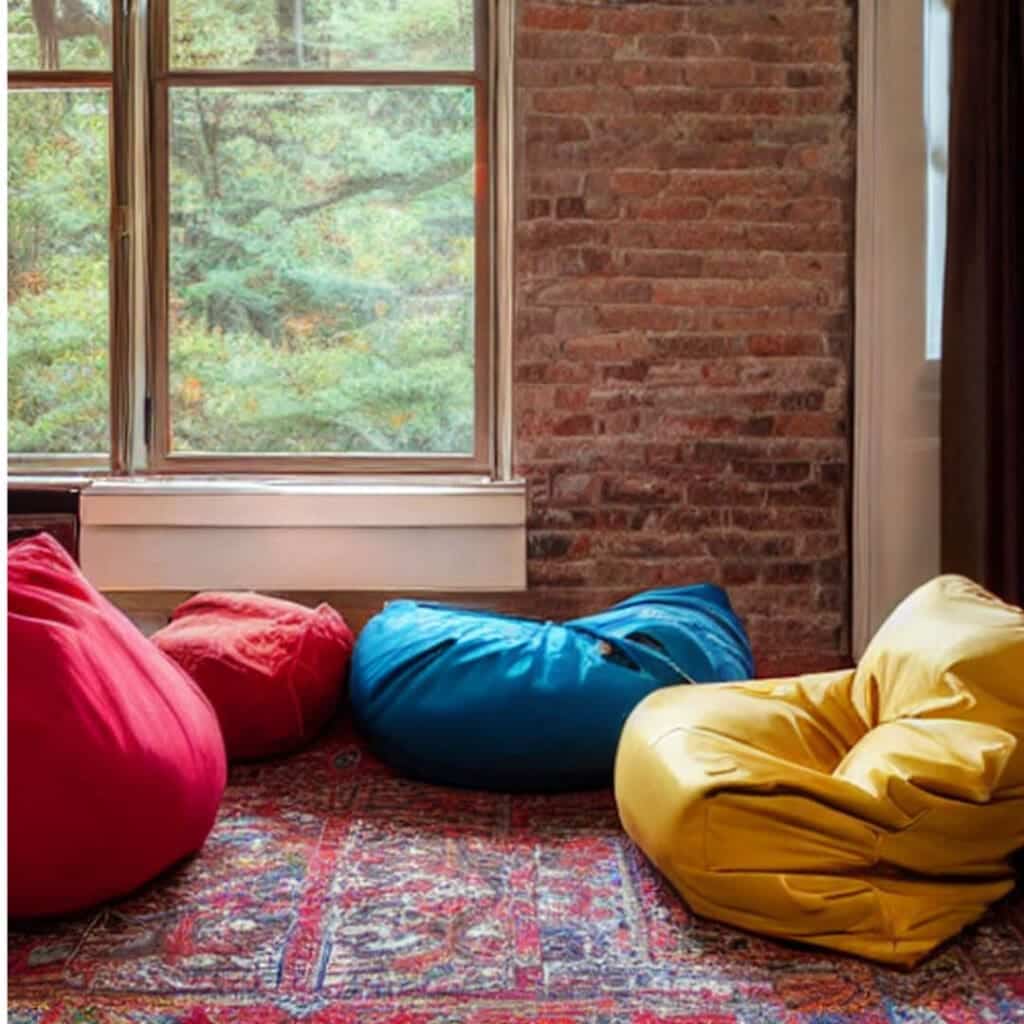
The beanbag chair was often covered in brightly colored fabrics, adding to its playful and fun vibe.
Many 1970s Designs Come Back Today!
While some design trends from the 1970s may seem dated today, many are still relevant. For example, the use of bold colors is still widespread in interior design, although it is often used in a more restrained way.
Instead of using multiple bright colors together, many designers today often choose one bold color as an accent in a more neutral space.
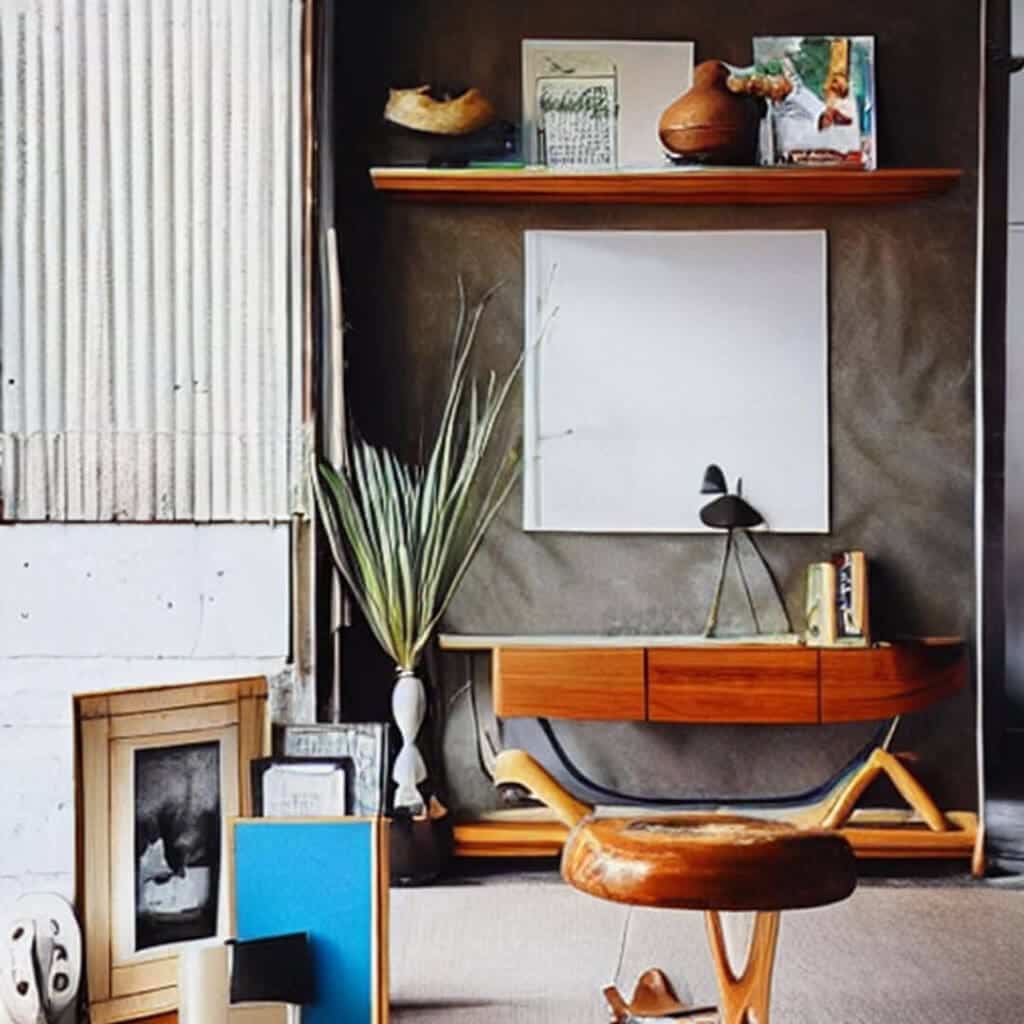
The use of natural materials is also still widespread in interior design today. Many people appreciate the warmth and texture that natural materials bring to a space, and they are often used to create a cozy and inviting atmosphere.
However, designers today often choose hardwood or engineered wood instead of stone and brick for flooring, which is more practical and easier to maintain.
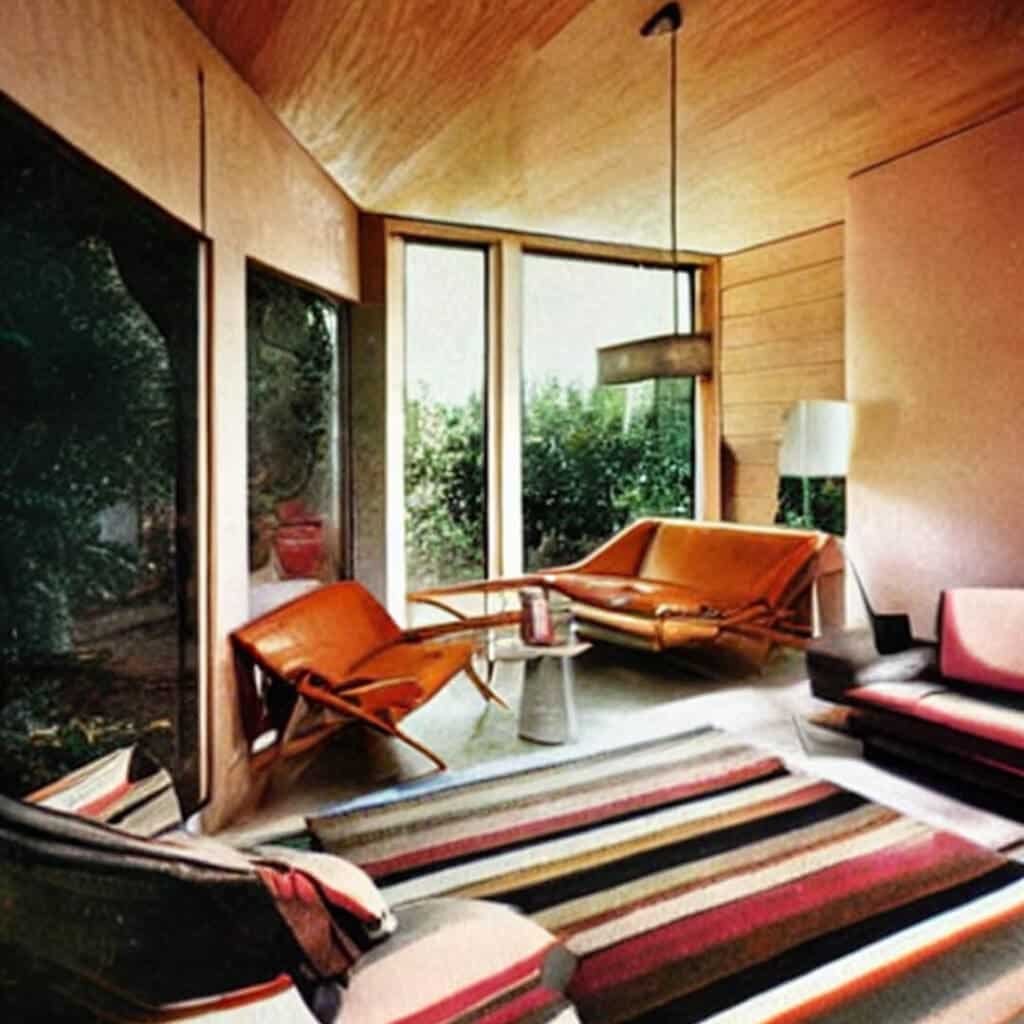
Geometric patterns are also still popular in interior design, although they are often used more subtly. Instead of using bold geometric patterns on wallpaper and fabrics, many designers today often use smaller, more delicate patterns as accents in a space.
Different versions of the bean bag chair continue to be famous for many kinds of decor; the bean bag chair shows us that comfort continues to be important in design.
Design Trends Will Evolve And Come Back
It is interesting to see how design trends evolve and come back differently over time. While the trends of the 1970s may seem dated to some, they still have a place in the world of interior design.
As the saying goes, “Everything old is new again,” which is undoubtedly true in design.
One of the reasons that design trends come back is that they often react to what came before.
For example, the bold colors of the 1970s were a reaction to the muted tones of the 1960s, just as the minimalism of the 1990s was a reaction to the excess of the 1980s. Many of the same interior design are reactions to cultural, social and other changes taking places.
The design trends of the 1970s reflected the world’s social, political, and cultural changes. The rise of feminism, the counterculture movement, and the increased focus on environmentalism impacted how people decorated their homes.
Design trends also come back because they evoke a sense of nostalgia and comfort. People often want to recreate the feeling of a specific period, and design trends are a way to do that.
Design trends also come back because they are often cyclical. For example, the popularity of mid-century modern design in the 1950s and 1960s waned in the 1970s but came back in a big way in the 2000s.
Similarly, the bohemian and eclectic styles of the 1970s have come back, with designers and homeowners embracing a more laid-back and eclectic vibe.
While design trends may come back in some form, they are never the same as they were before. Designers always put their spin on things, incorporating new materials, technologies, and aesthetics into their work.
For example, while the beanbag chair may have been a favorite of young people in the 1970s, today’s equivalent may be a sleek and modern yet very comfortable lounge chair made of eco-friendly materials.
Some Possible Future Design Trends
Home decor trends reflect what people feel and what is important to them. Here are some trends we feel may continue to gain momentum:
Sustainable And Eco-friendly
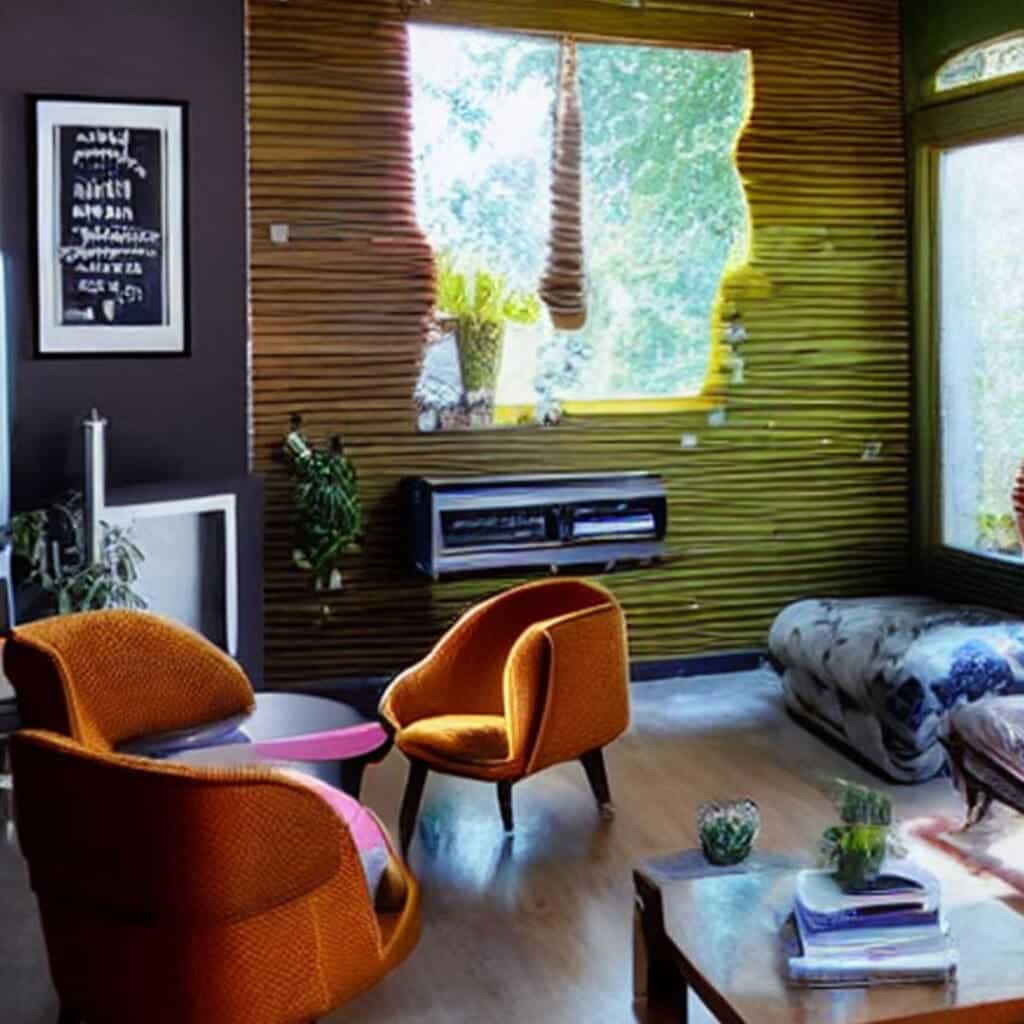
One trend that we feel will continue to gain momentum is using natural materials, particularly sustainable and eco-friendly. This is a response to the growing concern about the environment and the need to reduce our carbon footprint.
Wellness And Mindfulness
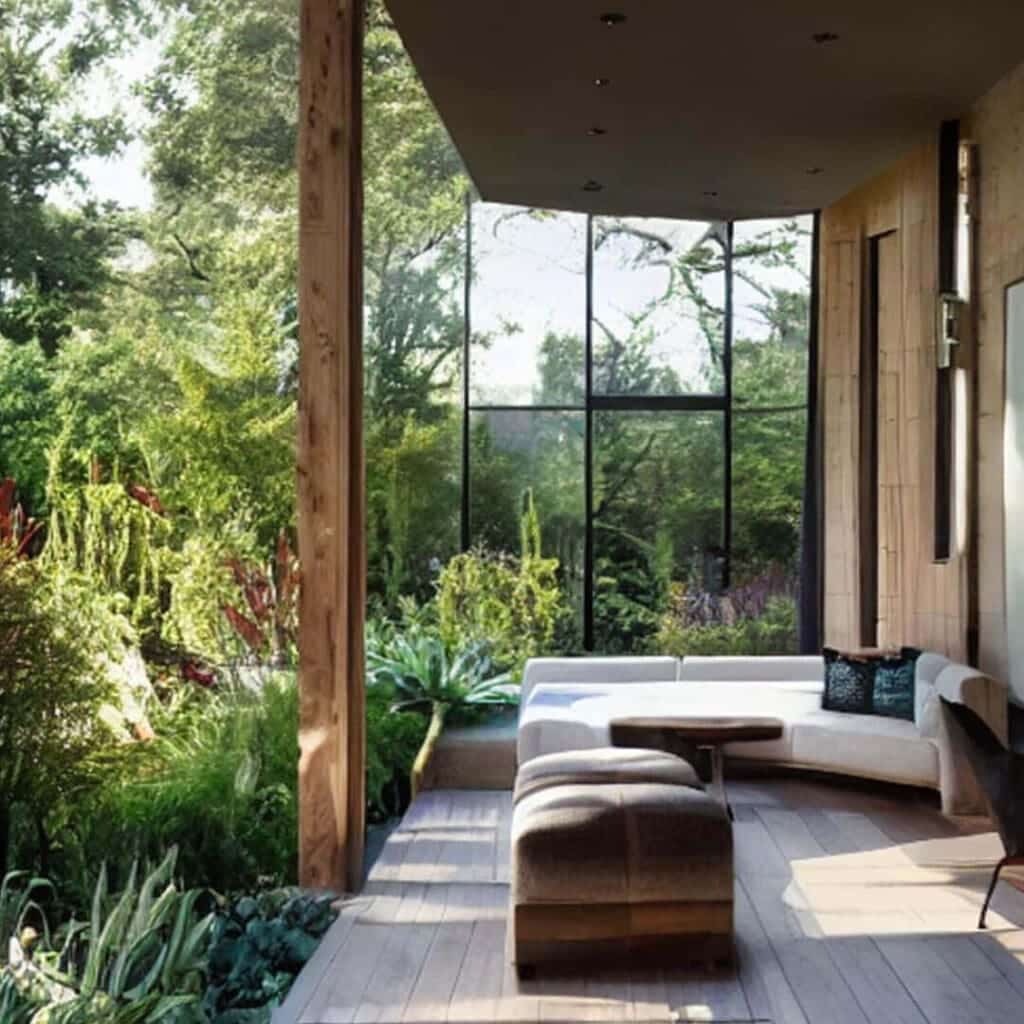
Another trend likely to continue is the focus on wellness and mindfulness in interior design. People are increasingly looking to their homes as a sanctuary from the stresses of the outside world, and designers are responding by creating spaces that promote relaxation and well-being. This may include natural light, plants, and calming color palettes.
Return To Traditional Styles
We also feel there will be a turn to traditional looks but with some new twists of the new era. People want to be around styles that remind them of home and a secure place and location.
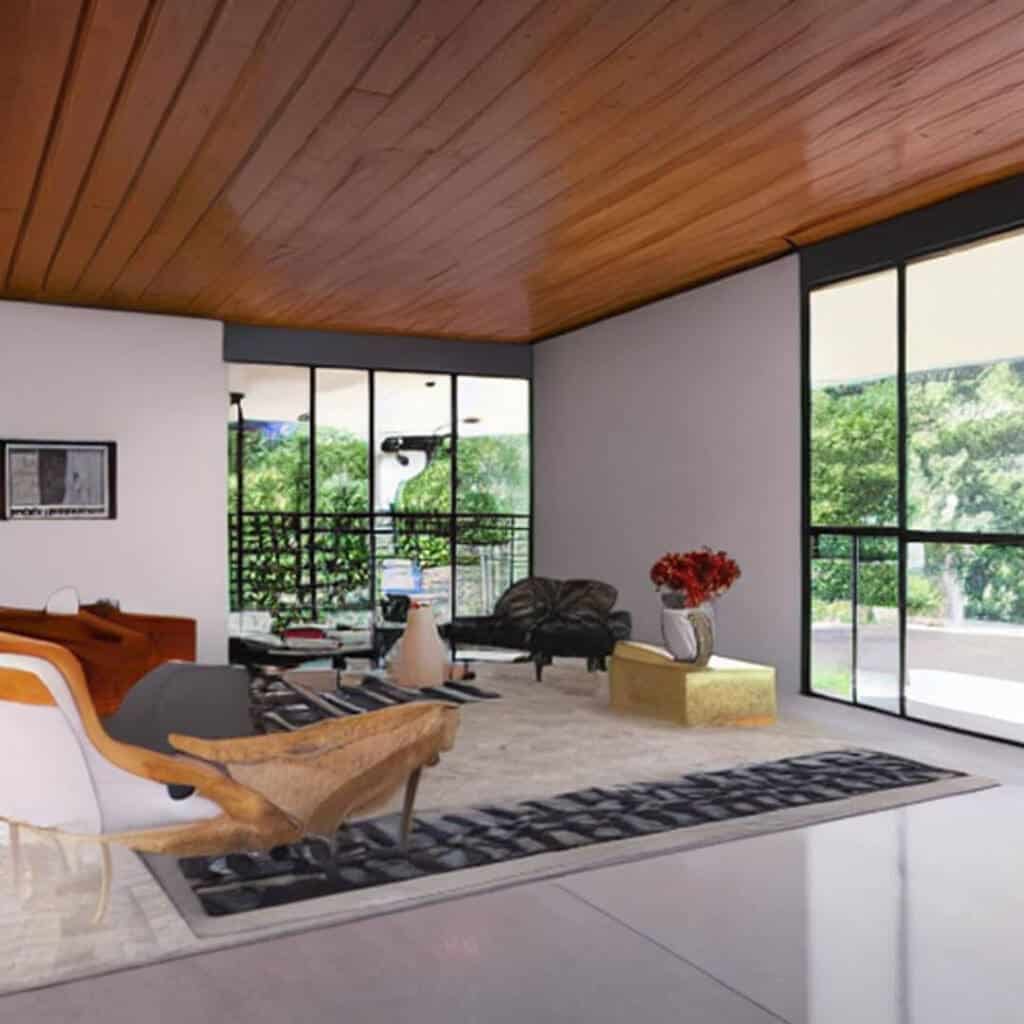
Interior design in the 1970s was all about bold colors, geometric shapes, and natural materials. While some of these trends may seem dated today, many are still relevant and continue to influence design today.
The cyclical nature of design trends means that they will always have a place in the world of interior design, although they may evolve and change over time. As designers continue to incorporate new materials and technologies into their work, we can expect to see new and exciting trends emerge in the years to come.
12 Reasons the ’70s Shone Bright: A Dive into the Decade’s Influence on Home Decor and Beyond
The 1970s, often dubbed a “decade of change,” was marked by a whirlwind of social, political, and cultural shifts. The era saw an eclectic mix of styles, sounds, and sentiments.
One of the most significant imprints left by the ’70s was in the realm of design, mainly home decor and furniture.
Let’s explore 12 reasons that make the ’70s an unforgettable era:
- Bold Color Palettes: The ’70s weren’t afraid of color. From mustard yellows to avocado greens and earthy browns, the decade embraced hues that resonated with its vibrant spirit. These shades are now synonymous with retro aesthetics.
- Open Floor Plans: The decade bid adieu to compartmentalized living and welcomed open, airy spaces. This architectural shift allowed for more interactive family living and created a sense of spaciousness.
- The Rise of DIY: With the hippie movement in full swing, the ’70s saw a surge in DIY home decor. Handmade macramé wall hangings, crocheted blankets, and beaded curtains became household staples.
- Innovative Materials: There was an experimental spirit in the air. Designers started using materials like Plexiglas, shag carpets, and molded plastic, offering homeowners unique textures and finishes to play with.
- Modular Furniture: Reflecting the need for versatility, the ’70s gave rise to modular furniture pieces. They were functional and aesthetically captivating, with their sleek lines and minimalist appeal.
- Psychedelic Patterns: The decade was marked by a love for bold, psychedelic patterns. Wallpaper, bed linens, and even tiles bore these swirling, vibrant designs, making homes feel energetic and lively.
- Bohemian Flair: Inspired by global travels and a quest for spirituality, the boho-chic style found its roots in the ’70s. Eclectic mixes of textiles, plants, and earthy decor became the hallmark of this design ethos.
- Statement Lighting: From lava lamps to oversized pendant lights, the ’70s knew how to make a statement with lighting. These fixtures not only illuminated spaces but also acted as focal points in rooms.
- Pop Culture Influence: The influence of pop culture icons, from David Bowie to Farrah Fawcett, was palpable. Their styles, attitudes, and tastes trickled into home decor, making it trendy and current.
- Sustainable Design: The environmental movement gained momentum in the ’70s, leading to a greater emphasis on sustainable materials and eco-friendly designs. Homes started incorporating natural elements and recycled materials.
- The Disco Vibe: The dazzling world of disco markedly influenced home decor. Mirrored surfaces, metallic finishes, and plush seating areas echoed the glitz and glamour of the discotheques.
- A Nostalgic Revival: Interestingly, the ’70s itself was a time of nostalgia, with a revival of styles from the ’30s and ’40s, especially in furniture. This layering of eras added depth and richness to home interiors.
The 1970s was not just a decade; it was a mood, a statement, and a testament to the ever-evolving nature of design. The era’s home decor and furniture trends, characterized by their audacity and creativity, continue to inspire and resonate even today, making the ’70s a truly golden era in the world of design.
Find out more about how Mondoro can help you create, develop, and manufacture excellent home decor and furniture products – don’t hesitate to contact me, Anita. Check out my email by clicking here or become a part of our community and join our newsletter by clicking here.
Mondoro gives out a FREE Lookbook to anyone interested. You can receive a copy of our latest Lookbook by clicking here.
Listen to our Podcast called Global Trade Gal. You can find it on all major podcast platforms. Try out listening to one of our podcasts by clicking here.
Subscribe to our Mondoro Company Limited YouTube Channel with great videos and information by clicking here.
Related Content
Is Nickel A Natural Element? All About Nickel And Its Everyday Uses
Nickel is a natural element as it is found in nature. It is a hard yet malleable and ductile metal with a shiny silver color with a slight gold tinge. Nickel is found mainly in Russia, South Africa, Canada, Australia, and some parts of China and Vietnam.
You can learn more by reading our blog, Is Nickel A Natural Element? All About Nickel And Its Everyday Uses by clicking here.
What Is The Mother Of Pearl Shell Used In Home Decor Products?
Mother of pearl, also known by the scientific name of nacre, is a pearl layer on the inner layer of the oyster shell. This pearl layer of the oyster is taken off the outer oyster shell. Then the leftover inner pearl shell is cut into various small shapes and sizes to be glued onto various home decor products such as mirrors, boxes, trays, and lamp bases.
You can read our blog on What Is The Mother Of Pearl Shell Used In Home Decor Products? by clicking here.
Home Interior Mirror Ideas, Manufacturing Home Decor Mirrors
Many Interior designers use mirrors to help them with their decorating. This is because a mirror can become a design focal point for any room. A mirror can help brighten a dark space and make a room look larger.
You can learn more by reading our blog, Home Interior Mirror Ideas, Manufacturing Home Decor Mirrors, by clicking here.

